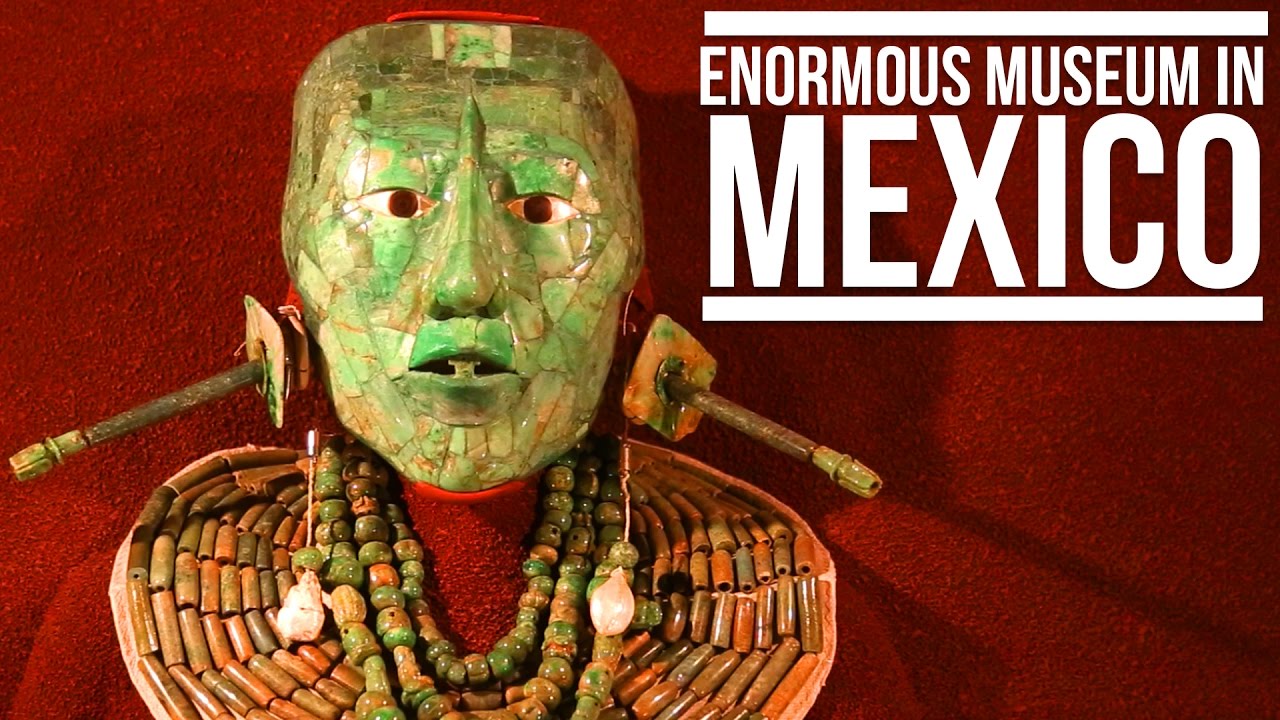Exploring the Diego Rivera Mural Museum in Mexico City
Delve into the fascinating world of one of Mexico’s most renowned artists, Diego Rivera, at the Diego Rivera Mural Museum in Mexico City. This museum is a captivating showcase of Rivera’s exceptional talent and contribution to the world of art. It houses one of his most iconic murals, “Dream of a Sunday Afternoon in the Alameda Central,” which is a vibrant representation of Mexican history and culture.
The Diego Rivera Mural Museum is not just a museum, but a testament to Rivera’s dedication to his craft and his deep love for his country. As you walk through the museum, you’ll be immersed in the rich tapestry of Mexico’s past, seeing it through the eyes of one of its greatest artists. The mural, which was originally painted in the Hotel Del Prado’s Versailles dining room, was relocated to the museum after the hotel was severely damaged in the 1985 earthquake.
The Masterpiece: “Dream of a Sunday Afternoon in the Alameda Central”
The mural, “Dream of a Sunday Afternoon in the Alameda Central,” is a massive work of art that spans 15.6 meters in length and 4.7 meters in height. It is a historical and social panorama of Mexico, featuring a multitude of characters from different periods of Mexican history. The characters include indigenous people, Spanish conquistadors, revolutionary figures, and even Rivera himself, depicted as a child holding hands with La Catrina, a famous symbol of death in Mexican culture.
The Diego Rivera Mural Museum provides a unique opportunity to delve deeper into Rivera’s art and gain a greater understanding of Mexico’s rich history and culture. Whether you’re an art enthusiast or simply curious about Mexican history, a visit to this museum is an enlightening and enriching experience.
What to Expect When You Visit the Diego Rivera Mural Museum
Visiting the Diego Rivera Mural Museum is a journey through the life and work of one of Mexico’s most famous artists. This museum, located in the heart of Mexico City, is home to one of Rivera’s most renowned works, the mural “Dream of a Sunday Afternoon in the Alameda Central”. This masterpiece spans the entire length of the museum’s main hall and provides an immersive, panoramic view of Mexico’s history as seen through the eyes of Rivera.
Engaging Exhibits
As you explore the museum, expect to encounter a range of exhibits that delve into Rivera’s life, his inspirations, and his artistic process. You’ll see preliminary sketches and studies for his murals, as well as photographs and personal artifacts. A highlight of the museum is the chance to see Rivera’s work in its original large-scale format, allowing you to appreciate the intricate details and bold colors that characterize his style.
Interactive Experiences
The Diego Rivera Mural Museum is not just about passive observation. Interactive exhibits provide a more hands-on experience. Touch screens allow visitors to zoom in on different parts of the mural to see the details up close, and audio guides provide in-depth commentary on the artwork. The museum also offers educational workshops and guided tours, making it a great destination for families and school groups.
Historical Context
Lastly, expect to gain a deeper understanding of the historical and cultural context of Rivera’s work. The museum does an excellent job of situating the mural within the broader sweep of Mexican history, explaining the significance of the various figures and scenes depicted. By the end of your visit, you’ll have a greater appreciation not just for Rivera’s art, but for the rich tapestry of Mexican history and culture that it reflects.
Understanding the Art and History at the Diego Rivera Mural Museum
The Diego Rivera Mural Museum in Mexico City is a tribute to one of the most influential artists of the 20th century. Home to the world-renowned mural, “Dream of a Sunday Afternoon in the Alameda Central”, the museum offers an immersive exploration into Rivera’s artistic journey and his profound impact on Mexican culture and society.
The Artistic Journey of Diego Rivera
Diego Rivera, a prominent figure in the Mexican muralism movement, used his art to depict Mexico’s political, social, and cultural narratives. The murals exhibited at the museum encapsulate Rivera’s artistic prowess, his commitment to social realism, and his deep-seated belief in public art. Visitors to the museum can delve into the rich layers of Rivera’s works, which are steeped in symbolism and intricate detail, reflecting the complexities of the Mexican identity.
The Historical Significance of the Murals
The murals at the Diego Rivera Mural Museum are not just artistic masterpieces; they are historical documents that tell the story of Mexico’s past. Rivera’s murals tackle themes of colonialism, indigenous culture, class struggle, and the Mexican Revolution, offering a vivid pictorial history of the country. His iconic mural, “Dream of a Sunday Afternoon in the Alameda Central”, encapsulates this approach, presenting a dreamlike panorama of Mexican history.
The Diego Rivera Mural Museum is a testament to the transformative power of art and its capacity to narrate history. By understanding Rivera’s art, visitors can gain a deeper appreciation of Mexico’s rich cultural heritage and complex historical journey.
Planning Your Visit to the Diego Rivera Mural Museum in Mexico City
When preparing for a visit to the Diego Rivera Mural Museum in Mexico City, there are several things you should consider to make your experience more enjoyable. This museum, also known as the Museo Mural Diego Rivera, houses one of the most famous works of this renowned Mexican artist, “Dream of a Sunday Afternoon in the Alameda Central.”
Visiting Hours and Entry Fees
The Diego Rivera Mural Museum operates from Tuesday to Sunday, between 10:00 AM and 5:00 PM. It’s important to note that the museum is closed on Mondays. The entry fee for this museum is quite affordable. As of the latest update, the general admission is 30 MXN, while students, teachers, and senior citizens can enter for free.
Location and Accessibility
The museum is conveniently located in the heart of Mexico City, specifically at Balderas and Colon Avenue, Colonia Centro. Public transportation options are available, including the metro (nearest station is Bellas Artes) and several bus lines. For those with mobility issues, it’s worth noting that the museum is wheelchair accessible.
Tours and Facilities
While you can explore the museum independently, guided tours are available and highly recommended for those who want to delve deeper into Diego Rivera’s work. The museum also offers workshops and cultural events throughout the year. Facilities include a bookshop where you can find a variety of publications related to Diego Rivera and his work.
Remember to respect the museum’s rules regarding photography. In most cases, non-flash photography for personal use is permitted, but it’s always best to check the specific rules at the entrance or with museum staff. Lastly, plan your visit in such a way that you can spend at least an hour or two in the museum to fully appreciate the mural and other exhibits.
Highlights of the Diego Rivera Mural Museum in Mexico City
The Diego Rivera Mural Museum, also known as Museo Mural Diego Rivera, is a must-visit cultural destination in Mexico City. This museum is home to one of Diego Rivera’s most famous works, the “Dream of a Sunday Afternoon in the Alameda Central”. This iconic piece is a stunning 15.6-meter-long mural that encapsulates the history of Mexico from pre-Hispanic times to the early 20th century.
The “Dream of a Sunday Afternoon in the Alameda Central”
This mural is undoubtedly the main highlight of the museum. Rivera’s intricate depiction of various historical periods and important figures in Mexican history is a mesmerizing spectacle. Notable characters include the Aztec emperor Moctezuma, Spanish conquistador Hernán Cortés, and Rivera himself depicted as a young boy, held by the hand by La Catrina, a skeletal figure symbolizing death.
Immersive Audio Guides and Interactive Exhibits
Another highlight of the Diego Rivera Mural Museum is the availability of audio guides and interactive exhibits. These features provide visitors with a deeper understanding of Rivera’s work and the rich history of Mexico. The museum also offers workshops and educational programs, encouraging visitors to learn more about Mexican art and culture.
Architectural Beauty
The architectural design of the museum is another significant highlight. The building, designed by architect Juan O’Gorman, is a perfect example of functionalist architecture. The large windows offer natural light, illuminating Rivera’s mural and creating an inviting and intimate space for art appreciation.



